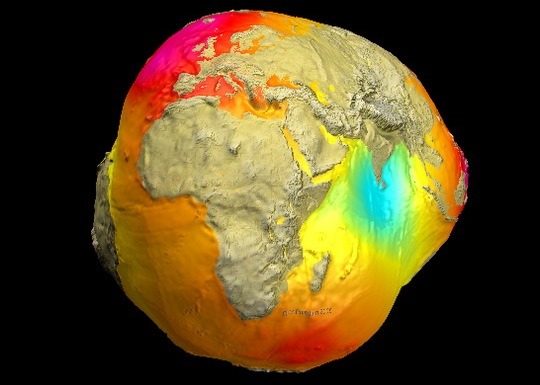The Potsdam Potato: Earth's Gravitational Field Insights


Introduction to the Potsdam Potato
The term 'Potsdam Potato' refers to a specific representation of the Earth's gravitational field derived from advanced satellite data. This notion stems from extensive research utilizing satellite missions, specifically the LAGEOS, GRACE, and GOCE programs. These satellites provide crucial insights into the variations in gravitational strength across different regions on Earth.
The Role of Satellites in Gravitational Field Measurement
Satellites play an instrumental role in measuring the gravitational field. For example, the LAGEOS (Laser Geodynamics Satellite) utilizes laser ranging to gauge how gravitational forces fluctuate across the globe. Additionally, the GRACE (Gravity Recovery and Climate Experiment) mission employs twin satellites to capture minute changes in gravity due to environmental factors such as water accumulation and melting ice. Finally, the GOCE (Gravity Field and Steady-State Ocean Circulation Explorer) operates at low altitudes, providing high-resolution gravitational field data. The information garnered from these satellites has contributed significantly to our understanding of the 'Potsdam Potato' and the underlying dynamics of Earth's gravitational field.
Understanding Gravitational Strength and Color Mapping
The gravitational field is typically represented using color maps that illustrate varying gravitational strengths. These maps allow scientists to visualize the gravitational anomalies across different geographical areas. Regions with stronger gravitational pull are generally depicted in darker colors, while lighter shades correspond to weaker gravitational fields. This visual representation is critical for understanding not only the gravitational dynamics but also their implications for Earth sciences, including tectonics, ocean circulation, and climate change. Each color-coded region on the Potsdam Potato map portrays how gravitational forces influence local and global phenomena.
In conclusion, the Potsdam Potato serves as a fascinating illustration of Earth’s gravitational field, blending satellite technology with the fundamental science of gravitation. The insights gained from LAGEOS, GRACE, and GOCE have provided a wealth of knowledge that is crucial for scientific advancements and understanding our planet's physical properties. As researchers continue to refine these models, we can anticipate a deeper understanding of gravitational phenomena and their far-reaching consequences on both natural and human-made systems.
